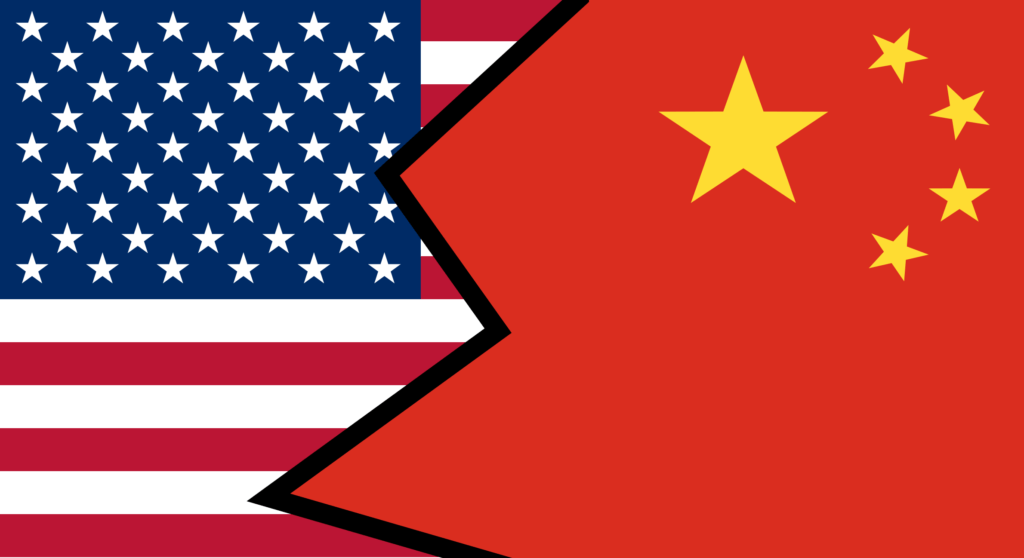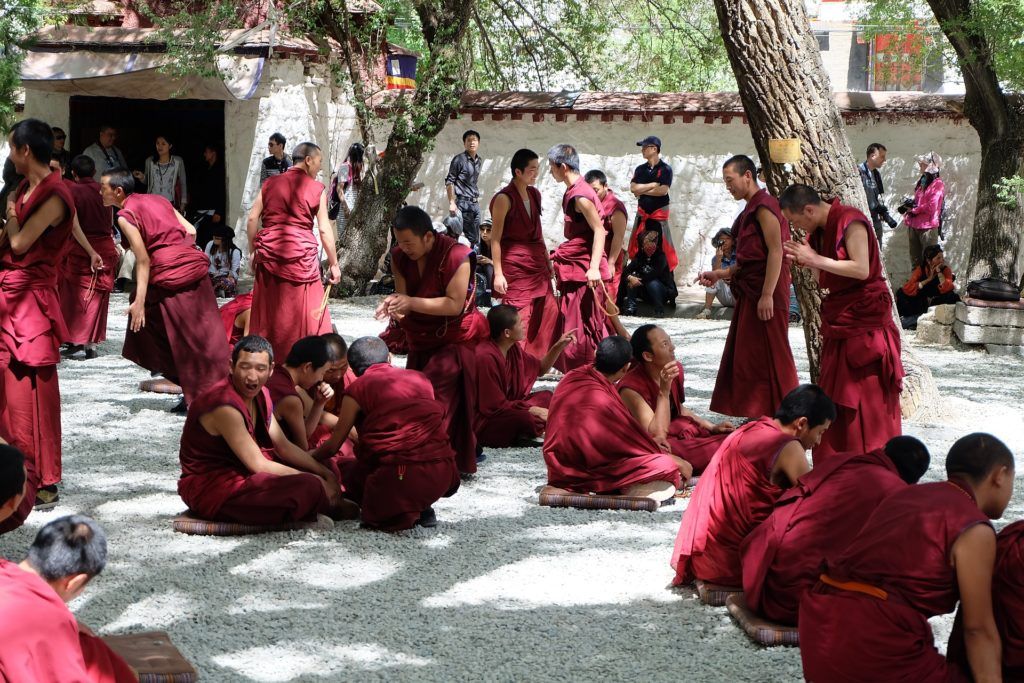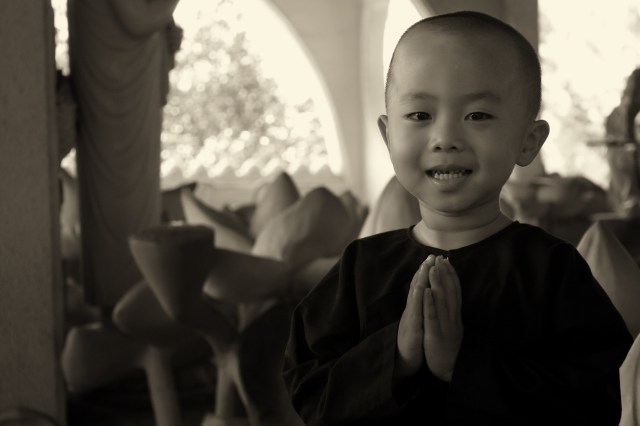Credit to Pixabay

“China would not be China without Christianity”
So says Professor Tao Feiya[1. Professor Tao Feiya speaking at Merton College Oxford and cited in Risks to Christians in China Today, from October 2014, by The Very Revd Dr Christopher Hancock (p15). Hancock’s paper is summarised in Appendix D, page 66 of this document capture.], the internationally respected head of Shanghai University’s Centre for the Study of Religion and Chinese life. However, in the light of recent negative developments and reports, not least those covered in Benedict Rogers’ powerful blog for UnHerd – ‘The world cannot ignore China’s worsening abuse of basic human rights‘ – further (and better) particulars are needed about both the plight and the potential of the Christian scene in today’s China.
Two megatrends that describe the Church in China today
As a regular visitor to Beijing and as Honorary President of Christian Solidarity Worldwide (CSW), I take a serious interest in this huge subject. The problem in writing a column about Chinese Christianity is that it is… er… inscrutable. Trying to improve on this cliché, the religious scene in today’s People’s Republic of China (PRC) is multi-layered, opaque, nuanced and complex. Westerners often fail to ask the right questions. Volatility, secrecy and regional differences obscure a clear view. Yet despite the confusing clouds of conflicting evidence, two trends have been emerging.
- The first is that state harassment and human rights violations against Christians have increased under President Xi Jinping.
- The second is the paradox that the greater the pressures imposed by the state upon some Christian groups, the greater is the growth of Christian churches and the numbers of Christian believers.
This paradox deserves to be explored from at least five angles – historical, numerical, cultural, political and spiritual.
(1) Historical – Chinese Christians have been around for nine centuries. Christianity in China is not a new phenomenon:
- Franciscans arrived in Beijing in 1295…
- Jesuits and Dominicans have been fulfilling their teaching and preaching vocations to a growing flock of Catholics since the early 17th century…
- Protestant missions in China began in 1807 reaching their peak in the 1920s….
For all its Maoism, Marxism and atheism, the founding of the PRC in 1949 never came close to extinguishing Christianity. Instead the PRC struggled to regulate Christian activities by a system of church registrations operated by the State Administration for Religions Affairs (SARA).
Churches were closed by SARA during the decade-long Cultural Revolution (or Great Proletarian Cultural Revolution as it was initially called) – but they went “underground”. After that Revolution ended in the later part of the 1970s “official” churches were allowed but “unregistered” “family” or “house” churches proliferated above ground. Today they are reckoned by many observers to account for over 60% of China’s Christians[2. Ibid, p2].
(2) Numerical. How many Chinese Christians are there? No statistics are reliable but the government’s own figures suggest that there could be between 80 and 110 million – while some experts claim far higher totals[3. Ibid, p3]. Professor Fenggang Yang of Perdue University, quoted by The Daily Telegraph three years ago predicted that, by 2030, there would be more churchgoers in China than in America:
“In 2010 there were more than 58 million Protestants in China compared to 40 million in Brazil and 36 million in South Africa, according to the Pew Research Centre’s Forum on Religion and Public Life. Prof Yang, a leading expert on religion in China, believes that number will swell to around 160 million by 2025. That would likely put China ahead even of the United States, which had around 159 million Protestants in 2010 but whose congregations are in decline. By 2030, China’s total Christian population, including Catholics, would exceed 247 million, placing it above Mexico, Brazil and the United States as the largest Christian congregation in the world, he predicted.”
All that needs to be said about this numbers game is that the figures are formidable and are having a significant influence on the culture and politics of the country. The arresting quote from Professor Feiya at the start of this article – “China would not be China without Christianity” – can be justified evidentially, even though it would be ridiculed officially.
(3) Cultural. Some scholars, including Professor Tao Feiya, argue that modern China’s systems of healthcare, education, orphanages, help for single mothers and other social policies owe much to the growing influence of Christians and Christian teachings. Others would echo the arguments of the Christian writer C S Lewis in his Abolition of Man. Writing of the “Tao”, he argued that there’s a natural law in most human societies, including China and this shared human wisdom could also help to explain the gentler aspects of PRC government.
(4) Political – Rendering unto Caesar rather than anti-Caesar revolutionaries. The politics of the Chinese state towards Christians in the 21st century have ranged from the favourable and tolerant to the hostile and repressive. Some fifteen years ago I attended a conference in Singapore with the title “The City on the Hill”. It was attended (in the capacity of observers) by senior Beijing officials from the Head Office of the State Administration for Religious Affairs. We had a surprisingly cordial and constructive dialogue. The SARA team, who in their day jobs were still busy seizing smuggled Bibles, were intrigued by the fact that Singapore’s large Christian community consisted of citizens who “rendered unto Caesar” because, having read Mark 12:17, they accepted the authority of secular government.
(5) Spiritual – A “precarious” tolerance of unregistered ‘House Churches’. As the next few years rolled by and good Chinese Christian citizens multiplied, it came as no great surprise that unregistered churches on the mainland were widely tolerated even though they remained illegal. A perceptive CSW report published in July 2011 stated:
“In the last few years the Chinese Government has largely tolerated the unofficial house church movement. Many ‘average’ Christians can practice their faith as long as they live quietly – a very different scenario compared to the China we heard about 20 years ago.”
Such tolerant times have changed and the cases of torture and human rights abuses described in Benedict Roger’s UnHerd column are one important part of the story.

A new intolerance
At a less disturbing but still concerning level, the Chinese Governments’ searching gaze and tightening grip on some parts of the Christian community is intensifying. Restrictions on academic theologians, the monitoring of classrooms, the disruption of meetings, the police photography of church congregations, the intimidation of pastors and the removal of church crosses (over 1,700 torn down in one province alone[4. UCANews – a Catholic news agency – reported early last year on this attack on Christianity’s central symbol: “Chinese authorities have taken down the first Catholic Church cross this year in Wenzhou Diocese in the latest sign the removal campaign in Zhejiang province is continuing. Government officials removed the cross of Zhuangyuan Church in Yongqiang parish just before dawn on Feb. 25, two weeks after Zhejiang’s religious affairs director called for “religious stability” ahead of the G20 Summit in the provincial capital Hangzhou in September… At least 18 Protestant church crosses have been removed in Zhejiang so far this year. But this is the first time authorities have targeted the much smaller Catholic community — an estimated 210,000 people — amid an ongoing campaign in which more than 1,700 crosses have been removed since the end of 2013.”]) are frequent forms of harassment. They are a reversal of the tolerance shown by the governments of previous Presidents of China, which started in the era of Deng Xiaoping.
So why are these “stiff cold winds,” to use a Chinese expression, now blowing so uncomfortably through the Christian community?
The winds of religious change originate from secular politics. The sheer growth of Christian numbers makes the regime uneasy. Communist Party bureaucrats worry that it is only a matter of time before church congregations follow Falun Gong members into political activism and demonstrations.

At the higher levels of government, the old fashioned militaristic and Marxist supporters of President Xi have pressed for less licence and more suppression. They are upset by assertive churches, such as the prominent Shouwang Church in Beijing which is unregistered, internationally connected and can attract congregations of more than one thousand people on Sundays. Such churches have been seriously harassed, allegedly in line with an old Maoist dictum of “kill the chicken to frighten the monkeys”. However, this policy is failing. The Christian chickens keep on hatching. Their churches are staying open.
A new concern of the party leadership is that Christian groups are being “infiltrated by external forces”. A high level 2015 conference in Beijing on religious affairs emphasised the need for all religions to become “more Chinese”. What this means in relation to the Christian faith is obscure. A sign of increasing toughness by the government comes from SARA and last month’s order from its director Wang Zion, ordering all Communist Party members to renounce their religious beliefs. Mr Wang called spiritual faith a “red line” for Party members, insisting that they must be “firm Marxist atheists and stick to the Party’s faith”[5. The Hindustan Times of 19 July 2017 quoted Wang: “Party members should not have religious beliefs, which is a red line for all members…Party members should be firm Marxist atheists, obey Party rules and stick to the Party’s faith…they are not allowed to seek value and belief in religion… Officials who have religious faith should be persuaded to give it up, and those who resist would be punished by the Party organisation.”].
Such negative rhetoric is sometimes taken too literally by Western observers. Anyone reading the latest Freedom House Report; The Battle for China’s Spirit: Religious Revival Repression and Resistance under Xi Jinping[6. The February 2017 report from Freedom House notes that “at least 100 million people—nearly one-third of estimated believers in China—belong to religious groups facing “high” or “very high” levels of persecution (Protestant Christians, Tibetan Buddhists, Uighur Muslims, and Falun Gong)”. It continues, however, “despite tightening controls, millions of religious believers defy official restrictions in daily life or engage in some form of direct protest, at times scoring significant victories.”] might get the impression that repression and persecution are becoming central to Christian life in today’s China. Far from it. As I have seen for myself on recent visits to the country, the number of churches of all kinds and denominations continues to soar. Many of them are full, with a concentration of younger worshippers. The Christian community has a wonderful resilience and adaptability to circumstances which guarantees its survival. It is now far too big, popular, and geographically widespread to be supressed. The regime knows this.

As a leading Oxford authority on Christianity and Confucianism, Dr Christopher Hancock has noted, “the Chinese government’s permissive acceptance of unregistered churches continues”. He also points out that remarkably few individual Christians “find themselves on the wrong side of a generously drawn official line”. Those who want to stay on the right side of the line have to eschew politics and protest. This is well understood, and explains why the silent majority of Chinese Christians remain silent. They have no discernible influence on public affairs or public opinion – except by the daily testimony of their lifestyles.
The only visible exceptions to this picture of discreet Christian submissiveness are a small number of outspoken pastors and human rights lawyers. They are the ones who make waves and pay the price of being bullied – or even tortured. Their plight is distressing and likely to deteriorate further.
Dr Hancock believes that Chinese Christians may have to endure a “10 year dark period of difficulties and harassments”. But he and a multitude of other China watchers also believe that the Christian spiritual fervour which has been steadily increasing in the country for the past three decades shows no sign of abating.
Whether officials in Beijing like it or not, Chinese Christianity is here to stay. And to grow.









Join the discussion
Join like minded readers that support our journalism by becoming a paid subscriber
To join the discussion in the comments, become a paid subscriber.
Join like minded readers that support our journalism, read unlimited articles and enjoy other subscriber-only benefits.
Subscribe